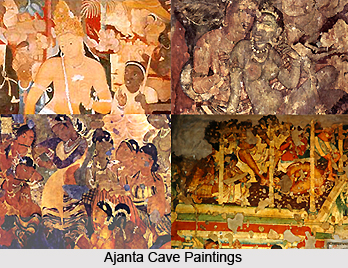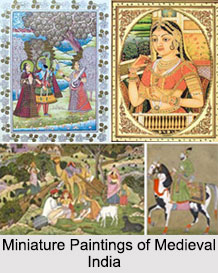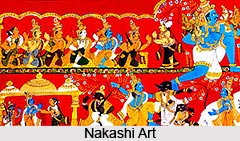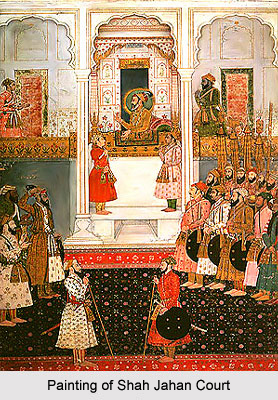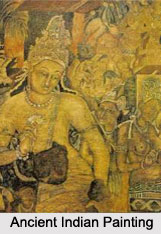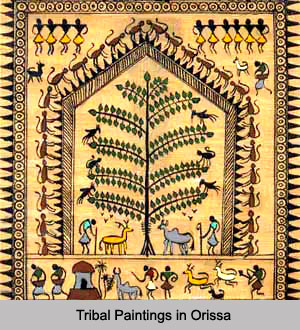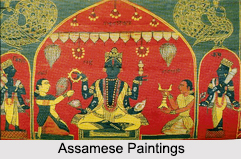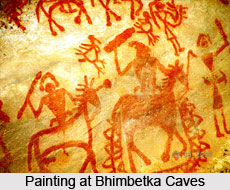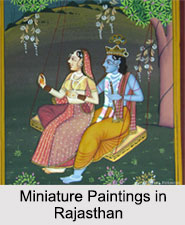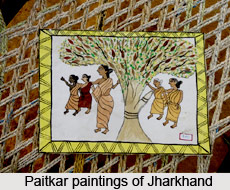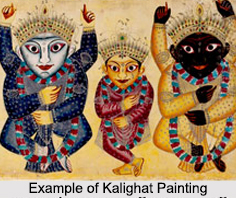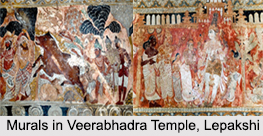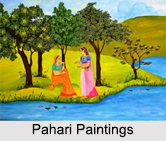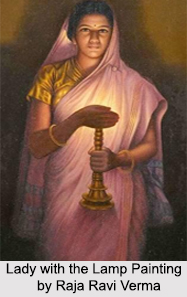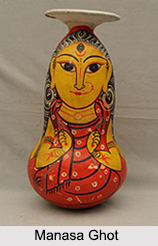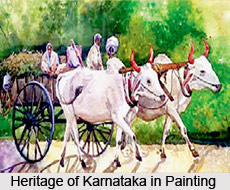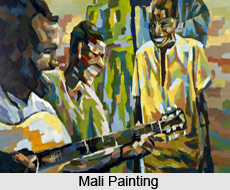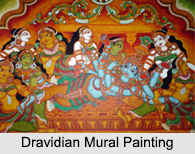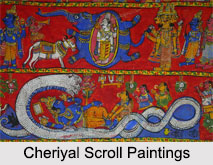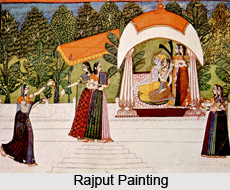 Rajput painting stands as the logo of simplicity. In the sphere of painting there was a development of the Rajput and the Pahari schools, after the advent of the Muslims in the fifteenth century. In this century two factors revolutionized the practice of painting in Northern India. Firstly it is the rise of a vernacular literature consequent upon the development of Bhakti and secondly it is the introduction of paper. Beginning in the late 16th century Rajput painting thus amidst its lines, curves, colours and hues ideally coincided with the renaissance of Hindu literature where the Bhakti cult indeed played a predominant role.
Rajput painting stands as the logo of simplicity. In the sphere of painting there was a development of the Rajput and the Pahari schools, after the advent of the Muslims in the fifteenth century. In this century two factors revolutionized the practice of painting in Northern India. Firstly it is the rise of a vernacular literature consequent upon the development of Bhakti and secondly it is the introduction of paper. Beginning in the late 16th century Rajput painting thus amidst its lines, curves, colours and hues ideally coincided with the renaissance of Hindu literature where the Bhakti cult indeed played a predominant role.
Theme of Rajput Paintings
During this time the stories of Lord Ram, Sita, Lord Krishna and Radha were popularised by bards, poets. These stories became the themes of pictures. The change of medium, specifically from stone to paper, in painting, added new styles, colours and designs to the existing Rajput art. The patronage of the Mughals infused a new strength in this school. The Rajput school had its predecessor in the Western or Gujrati School. The Gujrati school showed a linear vividness and vigour developed with great virtuosity, fine draughtsman ship combined with usage of vibrant colours and highly decorative designs in clothes and other textiles. These are still seen in the Jain manuscripts of Gujarat. These illustrate Gita-Govind of Jayadeva, Chaura-panchasika of Bilhana and some also illustrate Krishna-Lila. The elements of the composition were first outlined with the brush in light red, over a preliminary hard pencil outline. After the entire surface had been covered with a white priming of starch paste, the main lines were re-drawn in black. The background was then coloured to offer that desired effect. Puranic and Tantric texts contour the third group themes in Rajput painting and include such subjects as the Birth of Brahma, the Churning of the Sea of Milk, as well as pictures of saktis of the great gods.
The Rajput art was patronised by the Kings. Every ruler had his own artists. The main centers of this art were Malwa, Mewar, Udaipur, Ajmer, Jaipur, Jodhpur and Bikaner, Kishengarh, Nathadwara, Kota-Bundi, Baanpur, Datia. This art reached the pinnacle by the end of the seventeenth century. Much of its delicacy was derived from the Mughals.
Features of Rajput paintings
The main theme of Rajput paintings was Ragmala. The various `Ragas` have almost been personified in the paintings. The other themes were Krishna-Lila, Nayikabheda, Rituchaitra, court scenes, rulers` portrait and scenes of royal pursuits, such as festivities, processions and hunting. Rajput paintings are characterized by its primitive vigour and strength; directness and simplified formula of expression; Traditional motifs; Gay and brilliant colour-scheme and decorativeness. The Rajput art probes the innermost self. The developed Rajput paintings in the seventeenth century have forms as definite as those of the sonnet or the novel. It portrays the states of love or the type of hero and the heroine. The Rajput paintings are distinguished by their gorgeous colour-schemes. Gestures are means of expression and colour combinations form the elements of composition.
Pahari Painting
Allied with this school is the `Pahari` or Himalaya school of painting. The area of this painting spreads from Jammu to Tihri-Garhwal and from Pathankot to Kulu in the Punjab. A beautiful damsel is the pivot of this painting. Around her various scenes and imageries are depicted. Her emotions, moods, gestures, beauty of the limbs and devotion are depicted in thousands of ways. 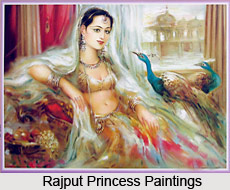 These paintings illustrate the themes of devotional love, Bhakti; centering round Lord Krishna and Radha. Stories of Ramayana and Mahabharata have also been used as themes in these paintings. Some of the important paintings are Nala and Damayanti, Go-Charan and Govardhan-dharan. These are also distinguished for their colour-schemes and depiction of inner feelings. The originality of this school lies in the sense of bliss or ecstasy which they infuse into the heart of an artist.
These paintings illustrate the themes of devotional love, Bhakti; centering round Lord Krishna and Radha. Stories of Ramayana and Mahabharata have also been used as themes in these paintings. Some of the important paintings are Nala and Damayanti, Go-Charan and Govardhan-dharan. These are also distinguished for their colour-schemes and depiction of inner feelings. The originality of this school lies in the sense of bliss or ecstasy which they infuse into the heart of an artist.
Rajput school of painting is the pictorial counterpart of Indian epics, romantic Vaishnava literature, and musical modes of India. However both these schools declined in the 19th century. Rajput painting was lyrical and emotional rather than intellectual, appealing more to the heart than the mind. Deftly curved, elegantly painted, Rajput painting still murmurs the lingering reminiscences of an Indian primitive character where colour indeed played an important role in illustrating symbolism.
